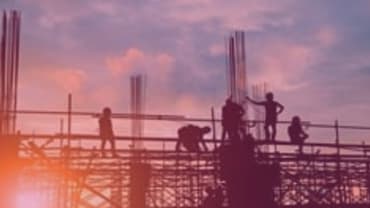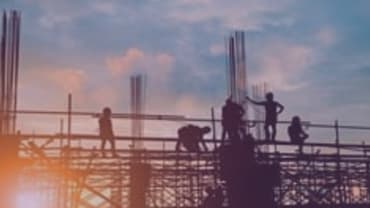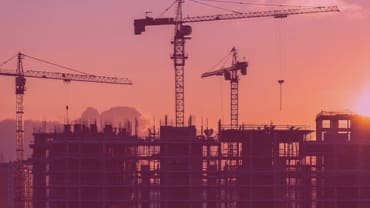Construction remains an area where the guidance on whether or not to keep sites open during the COVID-19 outbreak is not as clear cut as the industry would like it to be.
The Scottish Government has requested that all construction projects, other than those delivering essential buildings, should cease – while the UK Government's advice is that sites should stay open if contractors can meet public health requirements and adhere to industry-agreed site operating procedures.
If you have decided to keep your site open, we've put together some guidance on what the law says and how to manage your project safely.
The legislation
The Coronavirus Act 2020 enables the Scottish Government to enact regulations that impose restrictions on the public and create offences in relation to a failure to obey those restrictions.
The Scottish Government has done that with the Health Protection (Coronavirus)(Restrictions)(Scotland) Regulations 2020. The regulations make no reference to construction work and, although it is an offence for a person to leave their home, travelling for the purposes of work is a specified exception.
There is a requirement that the work cannot reasonably be done from home but there is no requirement that the work itself is essential. Accordingly, the opportunity to criminalise the carrying out of construction work has not been taken.
HSE issued guidance in relation to social distancing at work on 1 April 2020. It states that businesses should be kept open and, indeed, that it is important for them to carry on.
It also states that Public Health England guidance should be followed, where possible, which includes working from home where possible, avoiding non-essential travel and social distancing in workplaces:
However, in light of the Scottish Government's request, many construction sites in Scotland have closed.
It's worth noting that this apparent restriction to essential work and closure of sites does not remove the health and safety duties incumbent upon the construction industry.
A recap of health and safety legislation in the construction context
In common with all work activities, the overarching piece of legislation is the Health and Safety at Work Act 1974.
That Act requires all employers, so as far as is reasonably practicable, to ensure the health and safety of employees, other workers and members of the public who may be affected by the employer's operations.
The Act also gives authority for the creation of regulations which refine this general duty. Breach of the duty set out in the Act, or of any of the subsequent regulations, is a criminal offence and, can lead to criminal prosecution, conviction and sanction.
HSE has the power to issue improvement or prohibition orders if it considers that working practices breach health and safety requirements. The latter can result in immediate cessation of work.
The Management of Health and Safety at Work Regulations 1999 apply to all employers and set out the mechanism for assessing and managing health and safety risks. The mantra of those regulations is plan, control, organise and monitor.
Many of the other regulations relate to specific risks and are relevant to the construction industry, for example the Provision and Use of Work Equipment Regulations 1998 and the Work at Height Regulations 2005.
The Construction (Design and Management) Regulations 2015 set out the framework for the management and control of risks generated by construction work.
Those regulations place duties on designers and contractors at different levels in a project. In terms of part 3 of those regulations - the health and safety duties - the main contractor has a duty to prepare a construction phase plan that sets out the health and safety arrangements and site rules for the project.
The principal contractor has a duty to review, update and revise that plan as the project develops to ensure that it is always relevant, up to date and comprehensive.
The principal designer must maintain a health and safety file and it too must be reviewed, updated and revised.
Open sites - assess the risk
Before any construction work can continue during this public health emergency there must be a review of the health and safety aspects of the construction phase plan and the health and safety file.
Firstly, determine whether it is practically possible to satisfy the requirements of the current Government guidance. If the work can be made to comply; there should be new and specific risk assessments in relation to the risks now posed by the construction work and new method statements which demonstrate the means by which those risks will be managed.
If the guidance cannot be satisfied, further work should not take place.
Keep in mind that as well as risks arising directly from the virus, the outbreak also brings risks created indirectly by changes to working practices. Those effects include the potential for reduced staffing levels and reduced availability of equipment and third-party contractors. They should also be considered when revising risk assessments and method statements.
The assessment phase involves looking at the construction work and the risks it generates. Once those risks have been identified, their significance and the likelihood of them occurring must be assessed and thereafter control measures must be put in place to either prevent the risk before the work starts or control it to an acceptable level. Workers must be involved in managing those risks; they must be trained and provided with sufficient information.
The control measures must be maintained. They must be monitored, and so workers should be properly supervised. In the current context, and to ensure social distancing, that monitoring is likely be more rigorous than normal and careful consideration should be given to the extent to which the controls can be enforced. If they cannot, then arguably the work cannot be safely carried out.
Seven health and safety steps for open sites
In England and Wales, the Construction Leadership Council has issued a site operating procedures document (SOP), which outlines steps to ensure compliance with current UK Government guidance. The UK Government has recognised the SOP as good practice, thereby making it a useful starting point for risk assessment and method statements in the construction industry. The SOP is continually updated to reflect changes in public health guidance and the situation more generally.
- Welfare facilities
The current guidance from both the UK and the Scottish Government is that all workers should be provided with sufficient sanitary facilities to allow frequent handwashing with hot water and soap. It may be necessary to augment the facilities and supplies already on site.
Access to toilet facilities should be managed to ensure that the number of workers using them at any one time is restricted. Again, it may be necessary to increase the facilities available and the cleaning regime. If possible, the use of portable toilets should be avoided.
Canteens can no longer operate normally, however workers should stay on site and not use local shops. Ideally they should bring food and drinks from home. Any on site catering should provide pre-packed food and plates and eating utensils should not be used. Workers should clear their own rubbish and eating areas should be regularly cleaned.
- Cleaning
There should be robust cleaning of all regularly touched surfaces, for example door handles, toilet flushes and handrails.
Vehicle cabs should be cleaned regularly and upon changeover of staff.
- Sickness policies
Clear guidance should be issued to employees to ensure they understand the requirement to self-isolate, should they develop COVID-19 symptoms.
If someone becomes unwell with suspected COVID-19 at the premises or worksite, there should be a plan for decontaminating the areas that person has visited.
- Social distancing
Workers should be no closer than 2 metres from colleagues. Meetings should only include those necessary and attendees should remain at least 2m apart. If possible, they should be held outside and, if not, in well ventilated spaces.
Consideration should be given to whether or not employees can work from home and if they can, they should..
The 2m social distancing rule must be adhered to at all times, if this is not possible then work should not be carried out. In any event, interaction between employees should be minimised and crews and shift patterns should be maintained to avoid transmission across the entire workforce.
- PPE
Single use PPE should be disposed of, to avoid being reused.
Re-usable PPE should not be shared between workers and should be cleaned after every use.
Consideration should be given to whether additional PPE is required in light of the outbreak. In particular, whether first aiders require additional protection.
- Statutory inspections of plant
HSE issued guidance in relation to equipment legally subject to written schemes, statutory inspections or thorough examinations on 25 March.
The guidance emphasises the need to protect engineers carrying out inspections and those present when these take place. It is suggested that, where resources are restricted, they should be focused on premises where the most vulnerable are located and infrastructure that is essential to the running of the country.
While legislation does allow for some thorough inspections/ statutory inspections to be postponed (with the agreement of a suitable competent person), HSE is not currently considering relaxation of or exemption from the statutory requirements. In any event it remains the duty-holder's responsibility to ensure that equipment is safe to use – notwithstanding the requirement for inspection.
Accordingly, inspections should continue to take place where possible. Where that cannot be achieved and the applicable regulations do not allow extension; it is unlikely that the equipment can be used meantime.
- Review your situation
The obligation to review arrangements requires full consideration on a regular basis as to whether or not it remains safe to have your site open. The guidance, and the particular circumstances of any site, are likely to change frequently in the coming weeks.
Careful consideration should be given to whether or not the original health and safety control measures can be achieved in light of social distancing requirements, staff reductions and increased cleaning and hand hygiene regimes.
Contributors
Legal Director
Partner













